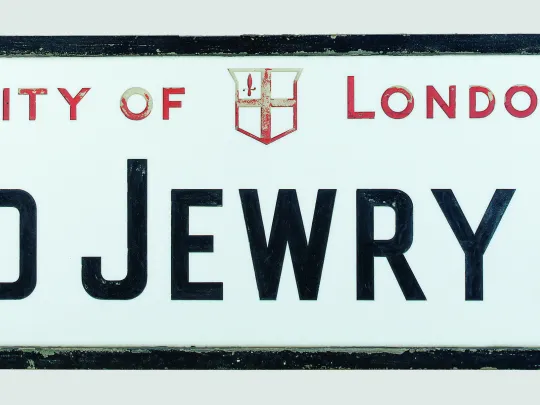
1. Fish and Chips
Eighty per cent of Brits visit a fish and chip shop at least once a year. How best to serve this classic dish is the subject of much debate. Do you take yours with salt and vinegar, like it plain with mushy peas or spice it up with curry sauce?
It’s thought that fried fish was first introduced into Britain by Jewish refugees from Portugal and Spain in the 16th century. The first fish’n’chip shop was opened by a Jewish immigrant Joseph Malin, in Cleveland Street, within the sound of Bow Bells around 1860.

2. Bagels
Bagels are thought to have originated from Eastern Europe. Rumour has it that the hole in the middle of bagels was to allow bakers to thread them onto dowels when they walked the streets selling their bread.
There are many bagel shops in the East End from the time that the area was mainly Jewish, including the famous Beigel Bake on Brick Lane.
This shop is open 24 hours and produces 7,000 bagels every day.
3. Language
Have you ever told a friend to keep ‘schtum’, tried to ‘schmooze’ someone, or hated a film because it was just too ‘schmaltzy’? Many Yiddish words like these are now part of the English dialect. Jews have also helped shape the cockney accent. Listen carefully to an older EastEnder, and you might hear a few Yiddish words. You might also hear some of the nasal inflections and speech patterns of the Yiddish language.
4. The Full Monty
The phrase ‘The Full Monty’ is thought to come from Burton’s key role in providing demob clothing in the Second World War. From the late 19th to the late 20th century, British menswear set trends that led the world. Many of the most influential figures of that period were Jewish, including Montague Burton (whose company is now Burton Menswear).
During World War II, Montague Burton made a quarter of all uniforms for the British armed forces. Burton went on to make a quarter of all demob suits after the war - hence ‘The Full Monty’.
5. Mods
Many of the earliest mods were Jewish and had family connections to the tailoring trade. The archetypal mod look was based on Italian-style lightweight suit with short, single-breasted jackets and narrow trousers without turn-ups.
From 1962, the mod style spread and Soho’s Carnaby Street became the home of mod style. One of the most famous mod tailors was East Ender Harry Bilgorri. In the 1960s, he moved to Brishopsgate, where his clientele included a young Marc Bolan.
6. Portable Music
Long before the iPod, in 1914 the London-based musical instrument company ‘Barnet Samuel and Sons’ invented and patented the first portable gramophone. It was sold under the trade name Decca. The name was coined by Wilfred Samuel, founder and first chairman of the Jewish Museum London.
Samuel wanted a simple name that would work across language barriers to enable access to the lucrative export market. The Samuel family sold the Decca gramophone company in 1928. The new owners then set up Decca Records.
7. Modernism
Many Jewish artists fleeing Nazism came with modernist ideas from central Europe when they came to London in the 1930s
These included Erno Goldfinger (architect of 2 Willow Road in Hampstead and the infamous Balfron and Trellick Towers). Artists like Freud, Auerbach, and Kossoff brought with them the rawness and realism of European modernism. Ceramic artists including Lucie Rie and Hans Coper also based themselves in London.
8. City of London
London’s medieval Jewish community lived in a small area that is now a part of the City of London. The community is known to have had synagogues, a slaughterhouse, and two mikvehs (ritual baths). Today the only visible sign of the medieval Jewish community is in the street name – Old Jewry.

9. Fair Trade
The London Jewish Bakers’ Union made use of an early type of ‘fair trade’ sticker. Their banner, created in 1925, reminded customers to only buy bread with the union label on it as this guaranteed it was baked under acceptable working conditions. The idea of buying food that has been made by people treated fairly still exists today in the ‘Fair Trade’ symbol.
10. Freud and Psychoanalysis
Sigmund Freud and his family escaped Austria following the Nazi annexation in 1938 and settled in Hampstead. Their house at 20 Maresfield Gardens, now the Freud Museum, remained the family home until Anna Freud, the youngest daughter, died in 1982. If you visit today you can still see Freud's psychoanalytic couch, on which all of his patients reclined.
Learn more about the culture, history and heritage of Jews in Britain at the
Jewish Museum London.
Blog written by Hannah Talbot